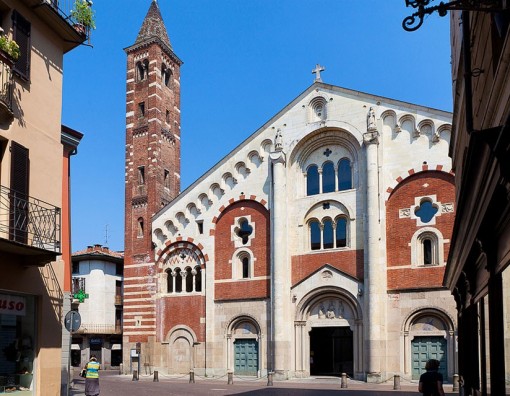Oratorio di San Giovanni Battista
There is no certain news regarding the constitution of the Confraternity of Saint John the Baptist, even if we can safely say that it was founded in the late 15th century. Named after the Baptist, like many others in Liguria, it gathered hundreds of confraternities who gathered in a small oratory next to the Ancient Parish Church of Ovada (originally named after Santa Maria). The Oratory was accessed by a staircase because it was built on a former cemetery. Over time, the Confraternity took on an important role in assisting the less well-off and all those who needed concrete care and help; the many offerings, the legacies, the donations and the support of the Brothers increased the resources of the Confraternity increasing its wealth that was also used for voluntary purposes. As time passed and the welfare needs and the religious habits changed, the members of the Confraternity were reduced to a few dozen and they dedicated their activities to maintaining the religious traditions and to the rich artistic and historical heritage of the Oratory and its relics. In 1645, the Confraternity was joined to that of the Holy Trinity based in Rome; in 1700, the Oratory was renovated and decorated in the style of the time. As no more significant work was carried out, the Oratory presents a clearly 18th century style and is an artistic testimony of enormous importance. The four canvases depicting the Passion of Jesus, like the construction of the altar and the crucifix, are from this period: in 1764, the Genoese painter Carlo Bensa was commissioned to fresco the vault with the glory of Saint John the Baptist and the four Evangelists. Around 1790, in precarious conditions and with the work for the construction of the new Church entitled to Our Lady of the Assumption almost complete, the Ancient Parish Church was closed to worship. The Confraternity decided to purchase the right aisle to build a proper staircase with its high and narrow façade, acquiring the particularity of a raised church that made it less popular and more intimate. In 1835, the bell tower was built and thirty or so years later the bells (the current ones are later) were placed; the organ dates to 1882 (it was restored around 1929). Over the years, the Confraternity was enriched with furnishings, garments, vestments, paintings, silverware and sculptures: the red cloth capes worn by the carriers of the chest and by the children who followed the Procession gave the name to the Confraternity called “dei Rossi”(of the reds) which made it distinct from that of the S.S. Annunziata (“dei Turchini”). The chest depicting the Beheading of John the Baptist by Anton Maria Maragliano is an inestimable and representative piece of work, originally located in the Oratory of San Giovanni all’ Acquasola in Genoa. It ended up in Savona during the troubled Napoleonic period and was purchased by the Confraternity in 1826 to the approval of the population of Ovada. Another processional chest belonging to the Oratory is that representing the Baptism of Jesus in the Jordan (of a more modest size than the one by Maragliano). On 24 June, the streets and squares of Ovada come alive with the Procession of Saint John the Baptist, a true mix of holiness and folklore that continues to instil a lively participation. The Confraternity aims to preserve the Heritage of the Oratory but, above all, to spread what can be easily defined as the folklore-religious tradition most loved by the people of Ovada.
Information and contacts
piazza San Giovanni - 15076 Ovada (AL)
Telephone: +39 0143 821.043
Link
http://www.oratoriosangiovanniovada.it/





